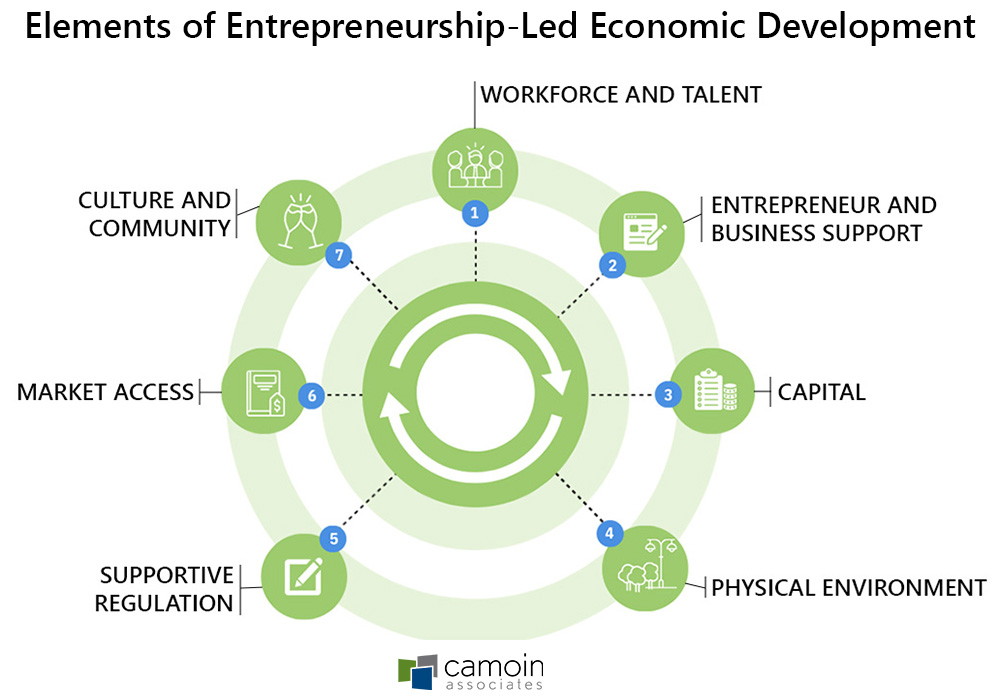- Navigator
- Entrepreneurship and Innovation
Many of our clients are eager to support the entrepreneurs in their communities and are seeking answers to key questions like:
- How do we effectively support entrepreneurs?
- How can we create an environment where people want to start businesses and stay and grow them?
- What is the role of economic development in supporting entrepreneurship?
That’s where we come in.
As part of Camoin Associates’ work for the Olean Business Development Corporation in Cattaraugus County, NY, we helped them zoom out and examine the parts of their community that are integral to supporting entrepreneurs.
To help with this, we used the graphic below to provide a snapshot of the seven key factors that contribute to a healthy environment for entrepreneurship-led economic development.
These factors are intended to guide communities in assessing the conditions in each area. Many of them will manifest differently across communities depending on their size, scale, values, and geographical location.
While there is no one right way to be “entrepreneur-ready,” evaluating these factors and developing a strategy that addresses weaknesses and celebrates strengths will help your community move in the right direction.
1. Workforce and Talent
A regional talent base with the skills needed to support new and growing businesses. Workforce development programs, training, and partnerships with education institutions enhance the talent pipeline, fostering an ecosystem where entrepreneurship is viewed in the community as a viable, attractive career path.
2. Entrepreneur and Business Support
A seamless network of business assistance provides easy access to high quality technical assistance through incubation and acceleration programs, from refining business models to navigating operational complexities.
3. Capital
A well-connected system with diverse sources of capital. Angel investors, VCs, financial institutions, government funders, and public sources are readily available, ensuring that all types of businesses, particularly those from underrepresented communities, can secure the funding they need at all stages.
4. Physical Environment
A vibrant, interesting, and well-maintained physical environment with amenities that meet the unique space needs of entrepreneurs, such as coworking spaces, incubators, labs, etc., within dynamic, multi-modal communities with modern infrastructure that promotes interaction and sparks creativity.
5. Supportive Regulation
A business-friendly regulatory framework, at all levels of government, that reduces barriers while providing clarity and support to entrepreneurs. Policies are streamlined, with easy-to-navigate permitting processes, tax incentives, and reduced red tape.
6. Market Access
Community support for entrepreneurs in identifying, accessing, and succeeding in new markets locally, nationally, and globally. Through strategic partnerships, infrastructure for e-commerce, and regular networking opportunities, businesses of all sizes can easily scale.
7. Culture and Community
A dynamic, inclusive culture of entrepreneurship where innovation, creativity, and risk-taking are celebrated and encouraged. Community members, businesses, and local leadership actively support and promote entrepreneurship, creating an environment where big ideas can flourish.
Interested in learning more about these entrepreneurship factors or what other communities have done? Contact Christa directly at christa@camoinassociates.com.
📍 Related Articles:




